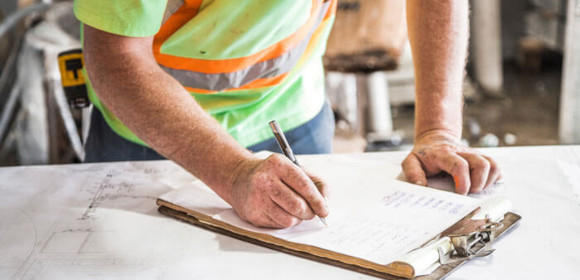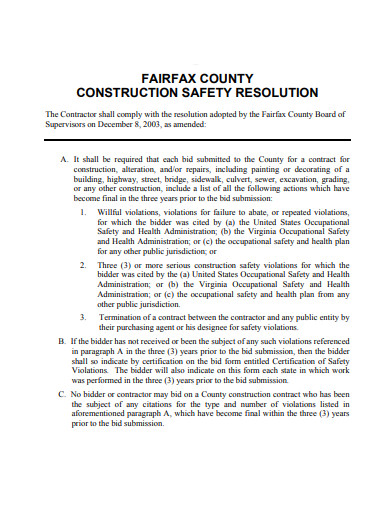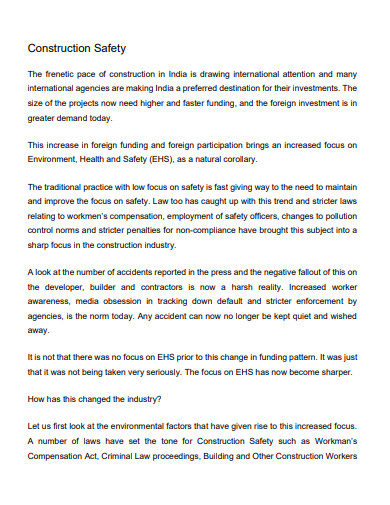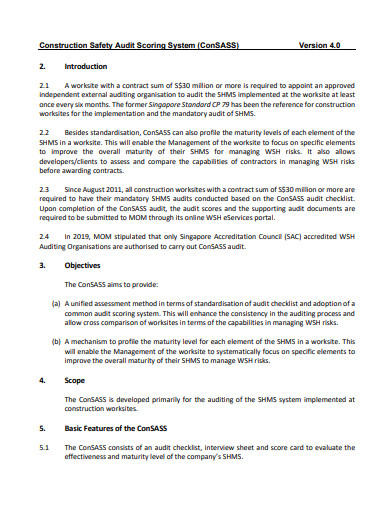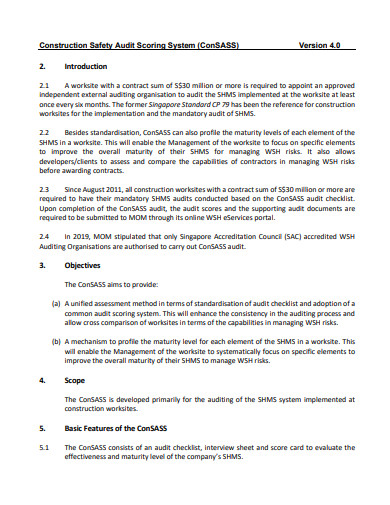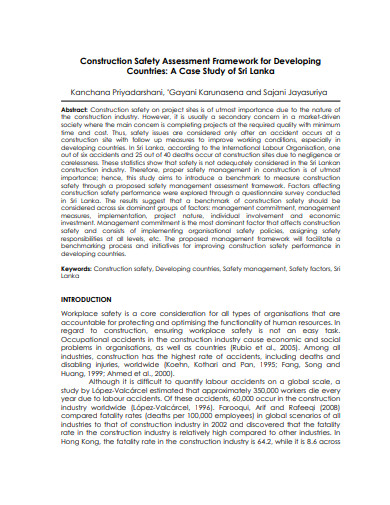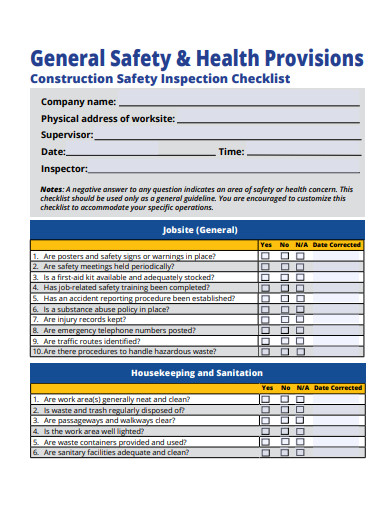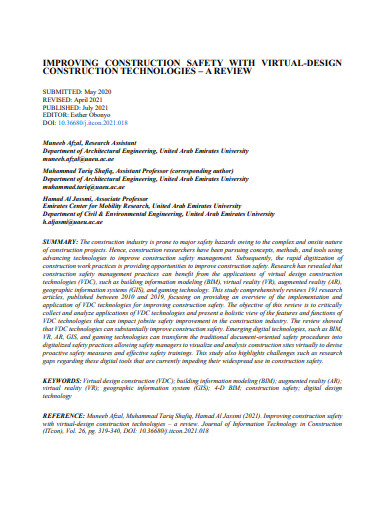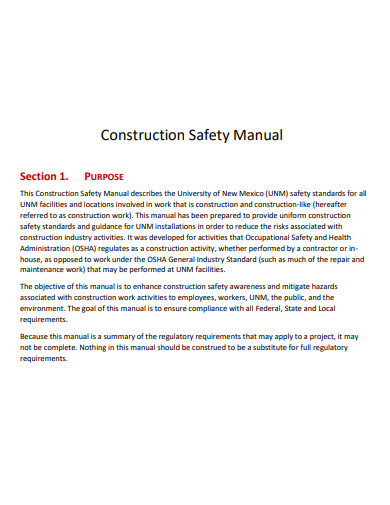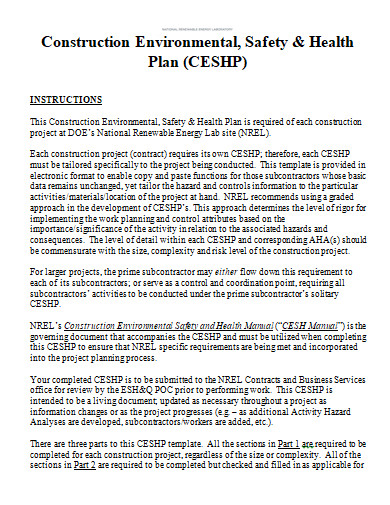Ensuring the well-being of construction workers and stakeholders is paramount in the building industry. Utilizing comprehensive construction safety templates can be the linchpin to maintaining a hazard-free environment. These ready-to-use documents provide guidelines, sample checklists, and actionable steps to ensure best practices are consistently applied. Explore our collection of construction safety templates, designed to streamline your safety processes and safeguard your projects, ensuring everyone returns home safely at day’s end. Dive in and elevate your site’s security measures.
12+ Construction Safety Samples
1. Construction Safety Emergency Plan Template
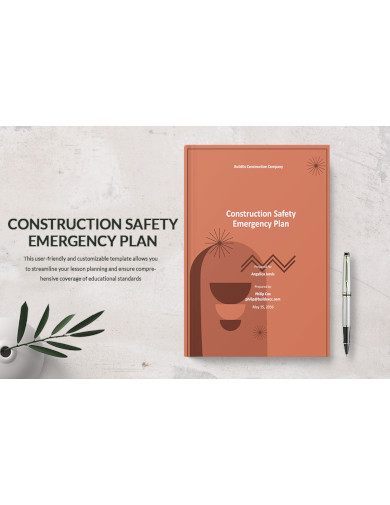
2. Construction Safety Report Template
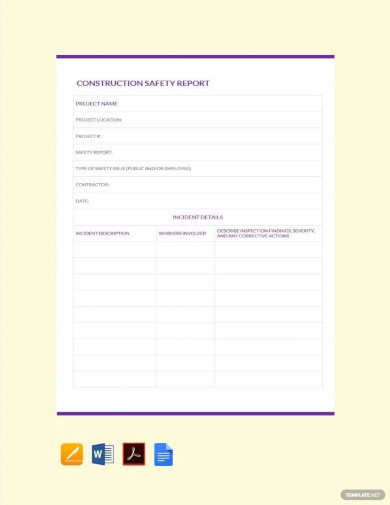
3. Construction Safety Template
4. Construction Safety Resolution Template
What is Design for Construction Safety?
Defining the Concept:
At its core, Design for Construction Safety (DfCS) represents a proactive approach to building safety into construction projects from the very inception. It’s not just about responding to hazards, but anticipating and designing them out before the first brick is laid or the first beam is raised.
Why It Matters:
Safety is often seen as a site management concern, but when integrated into the design phase, it can profoundly influence the outcome of projects. DfCS ensures:
- Proactive Hazard Management: By foreseeing potential safety issues, designs can be adjusted to minimize or eliminate risks altogether.
- Cost Efficiency: Addressing potential safety concerns during design can significantly reduce the financial implications of accidents and on-site modifications later.
- End-to-End Safety: It’s not just about the construction phase. A design that emphasizes safety ensures a safer environment for future occupants and maintenance workers too.
The Implementation Process:
For DfCS to be effective, it must be systematic. This involves:
- Interdisciplinary Collaboration: Architects, engineers, and health and safety professionals should collaborate from the outset.
- Safety Assessments: Regular safety assessments during the design phase help identify potential issues.
- Leveraging Technology: Modern design tools can simulate construction processes, allowing designers to spot and rectify potential hazards.
How do I Write a Construction Safety Plan?
Understanding the Need:
A construction safety plan is more than just a regulatory requirement; it’s a blueprint that ensures every person on a construction site returns home safely at the end of the day. It maps out the safety procedures, guidelines, and emergency responses for a construction project.
Key Steps to Drafting a Comprehensive Safety Plan:
Risk Identification: Start by surveying the construction site, understanding the project’s scope, and listing all potential hazards. This could range from machinery operations to environmental considerations.
Developing Safety Procedures: For each identified risk, lay out a detailed safety protocol. For instance, if you’ve identified a risk with heavy machinery operation, detail the training required, the PPE to be worn, and the safety checks to be conducted.
Emergency Response Protocols: It’s not enough to just prevent accidents; you must be prepared for them. Detail the steps to be followed in case of various emergencies – fires, structural failures, or injuries. Include evacuation procedures, first-aid measures, and key emergency contact numbers.
Training and Orientation: Clearly outline the safety training processes for new hires and existing staff. This ensures everyone is on the same page when it comes to safety.
Ongoing Evaluation and Updates:
Safety is dynamic. New risks can emerge as the project progresses. Thus, it’s vital to regularly review and update the safety plan. This ensures it remains relevant and continues to serve as a reliable guide throughout the project’s duration.
5. Simple Construction Safety Template
6. Construction Safety Audit Scoring System Template
7. Construction Safety Visualization Template
8. Construction Safety Assessment Template
9. National Construction Safety Team Act Template
10. Construction Safety Inspection Checklist Template
11. Formal Construction Safety Template
12. Construction Safety Manual Template
13. Construction Safety in DOC
What is a Safety Checklist in Construction?
A safety checklist in construction is an organized tool designed to guide supervisors, site managers, and safety officers in ensuring that all necessary safety precautions, protocols, and standards are rigorously observed on a construction site. This document offers a systematic way to inspect, evaluate, and maintain safety standards consistently throughout the project duration.
The Importance of a Safety Checklist:
Such checklists are not mere paperwork; they play crucial roles in several areas:
Consistency in Safety Practices: With a standard checklist, safety inspections are conducted uniformly, ensuring that every part of the site meets the required standards.
Documentation and Accountability: The checklist, when regularly completed, serves as a record of safety inspections. This can be invaluable in case of regulatory inspections, audits, or if there’s an unfortunate event that requires an investigation.
Early Hazard Identification: Regularly going through a safety checklist helps site managers identify potential issues before they escalate. Early identification means early resolution.
Key Components of a Safety Checklist:
Personal Protective Equipment (PPE): Ensure that all workers are wearing the required protective gear appropriate for their tasks. This includes helmets, safety boots, gloves, goggles, and any other specialized equipment.
Equipment and Machinery: A detailed inspection of all machinery and tools should be done to confirm they are in good working order and free from defects. Regular maintenance checks should also be verified.
Site Conditions: The general state of the construction site should be assessed. Potential hazards such as unsecured materials, open pits, or unstable structures should be identified and rectified.
Fire Safety and Emergency Protocols: Ensure that fire safety measures are in place. This includes checking the availability and accessibility of fire extinguishers, ensuring they are functional, and confirming that workers are trained on evacuation procedures.
Chemical and Material Storage: Materials, especially hazardous ones, should be stored properly. Verify that storage areas are safe, labeled, and that Material Safety Data Sheets (MSDS) are available for all chemicals on site.
First Aid and Medical Facilities: Check the availability and accessibility of first aid kits. Ensure they are well-stocked and that there’s personnel trained to administer first aid.
Regular Use and Updates:
For a safety checklist to be effective, it should be used regularly. A designated safety officer or site manager should be responsible for conducting these checks at consistent intervals. Moreover, as the construction project progresses, the checklist might need updates to address new risks or changes in the project’s scope.
In conclusion, a safety checklist in construction is more than just a document; it’s a commitment to the well-being of every individual on the site. When implemented and used correctly, it can be the difference between a successful, accident-free project and one plagued with hazards and disruptions.
Related Posts
Retirement Speech Samples & Templates
Weekly Schedule Samples & Templates
Contractual Agreement Samples & Templates
FREE 9+ Amazing Sample Church Bulletin Templates in PSD | PDF
Sample Business Card Templates
Sample Cashier Job Descriptions
Questionnaire Samples
FREE 10+ Sample HR Resource Templates in PDF
FREE 49+ Sample Job Descriptions in PDF | MS Word
FREE 23+ Sample Event Calendar Templates in PDF | MS Word | Google Docs | Apple Pages
Company Profile Samples
FREE 10+ Leadership Report Samples [ Development, Training, Camp ]
FREE 24+ Sample Payment Schedules in PDF | MS Word
FREE 10+ Return to Work Action Plan Samples in PDF | DOC
Autobiography Samples & Templates
